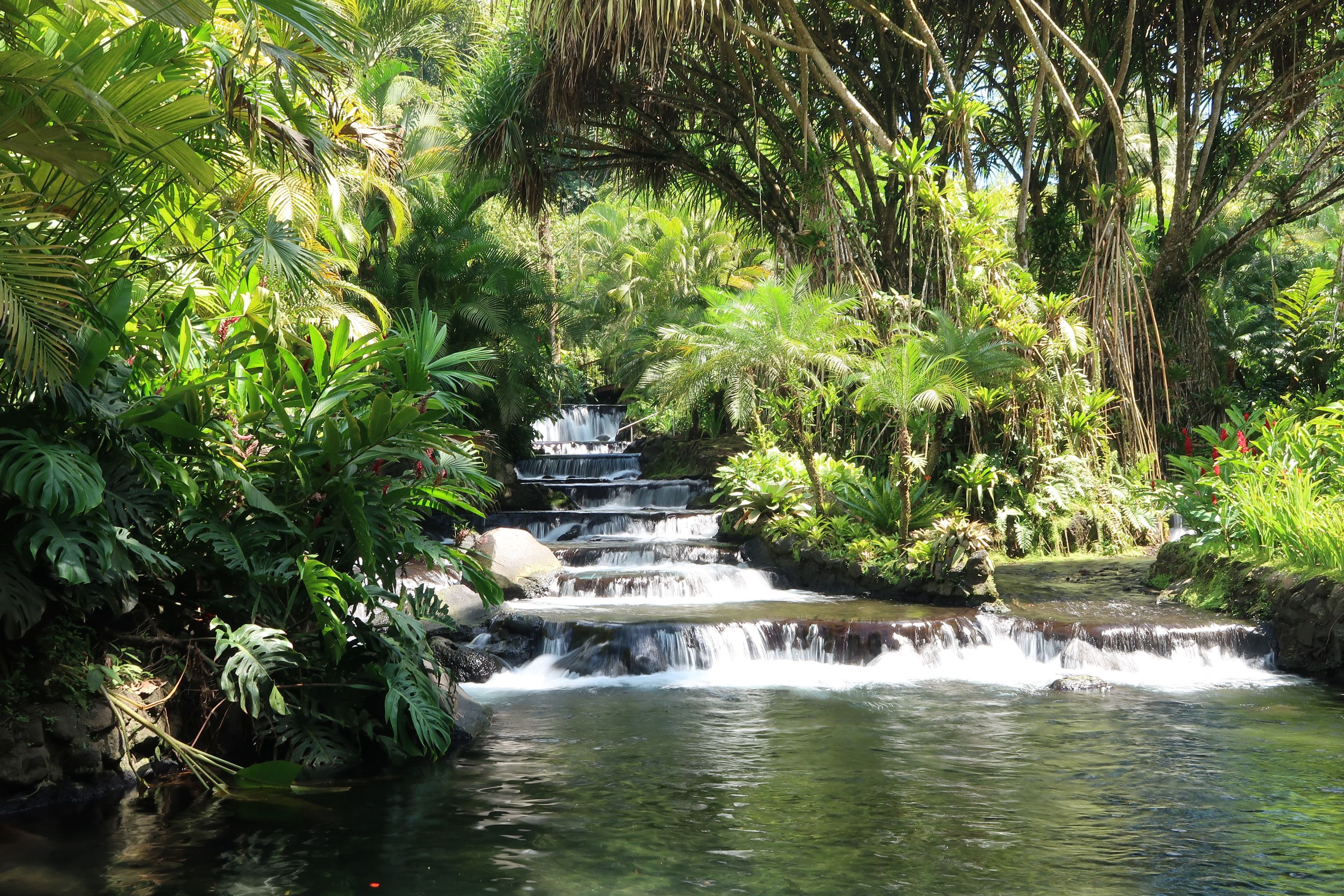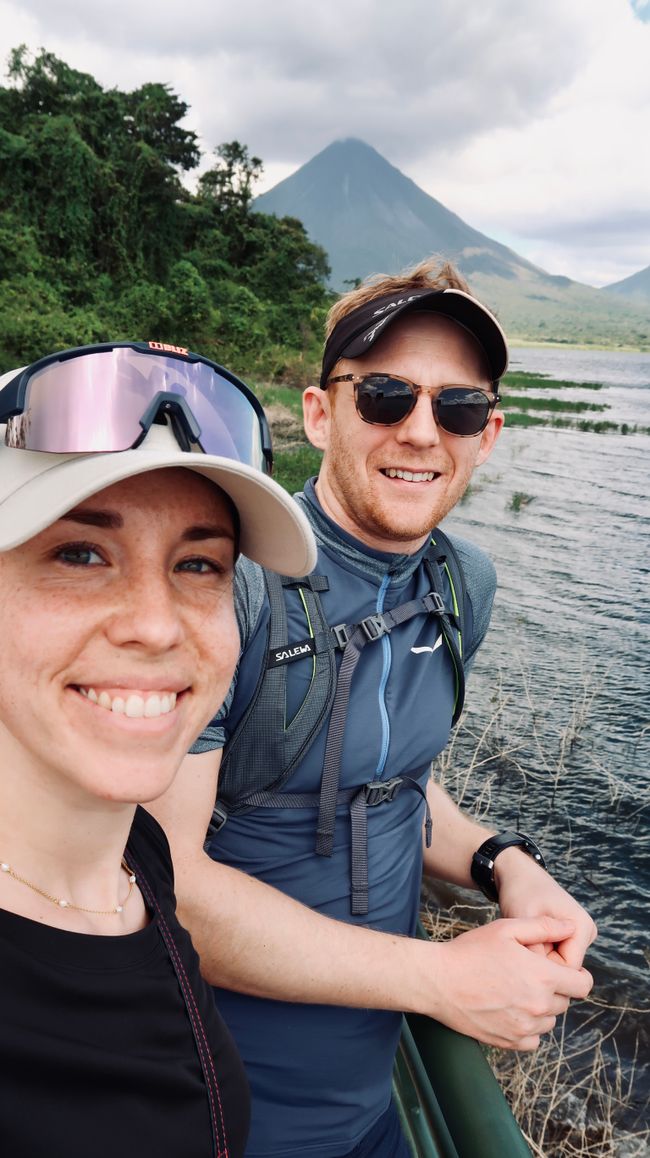Diving in Cenote Dos Ojos (22.02.2022)
ਪ੍ਰਕਾਸ਼ਿਤ: 23.02.2022
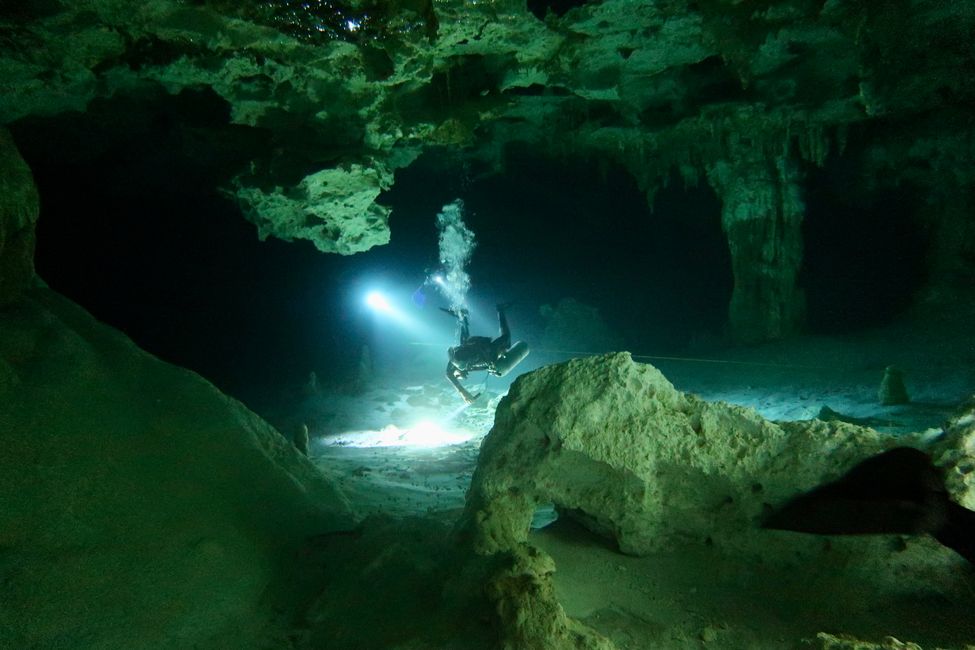
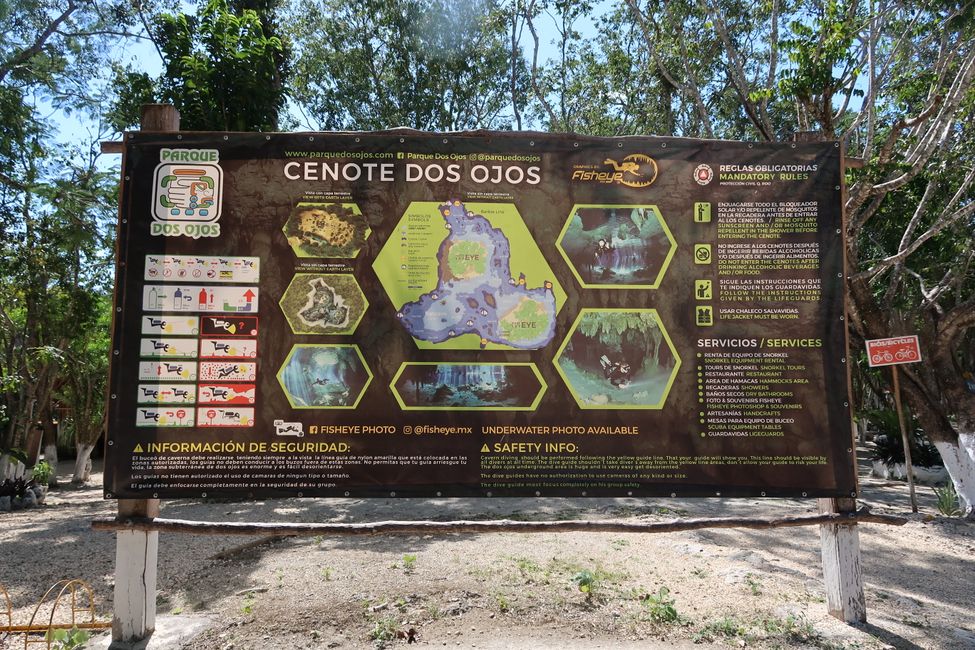
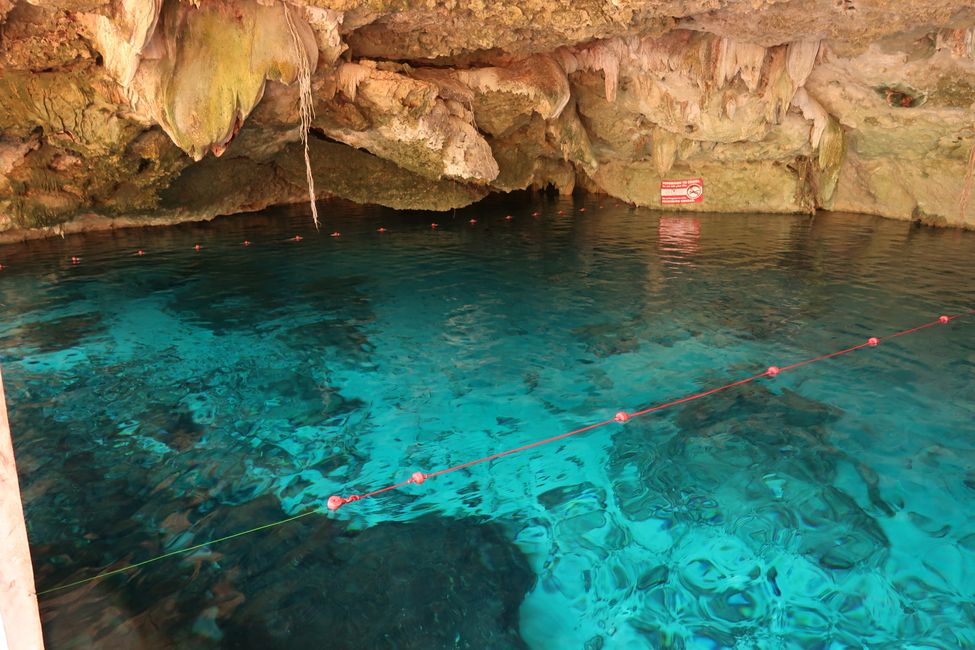
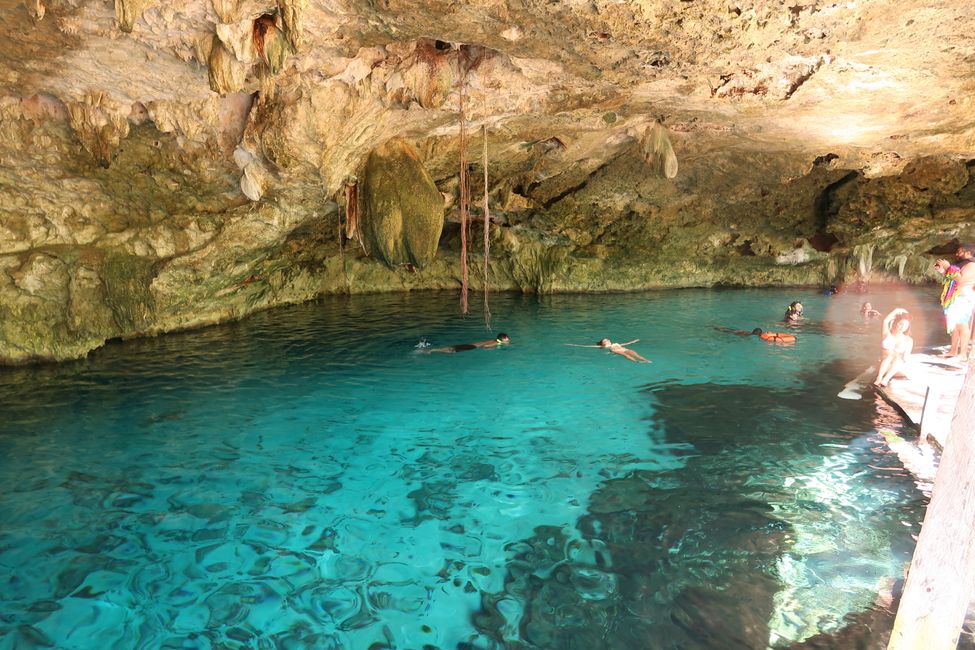
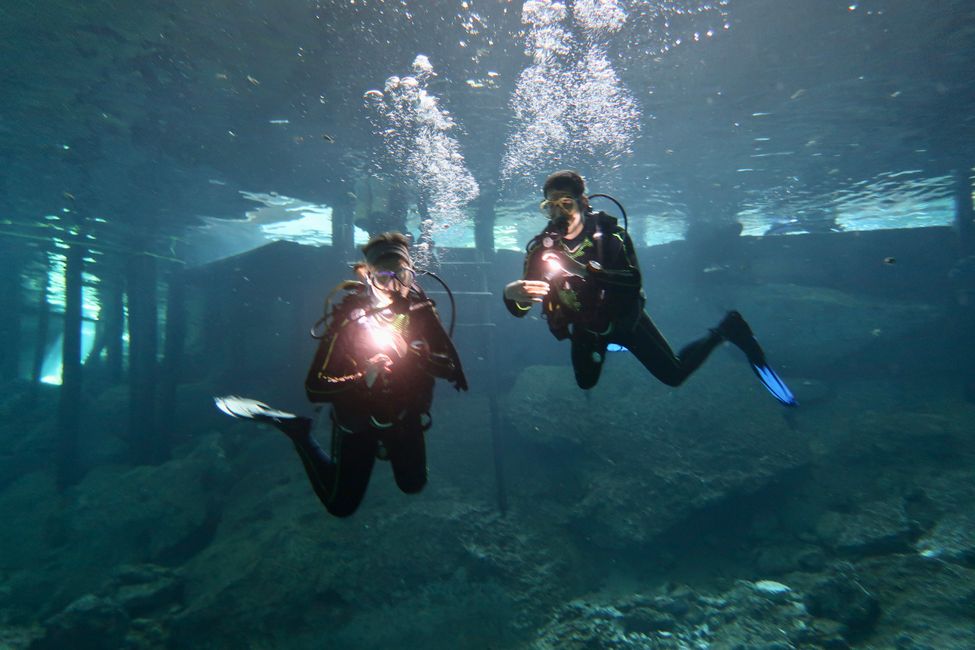
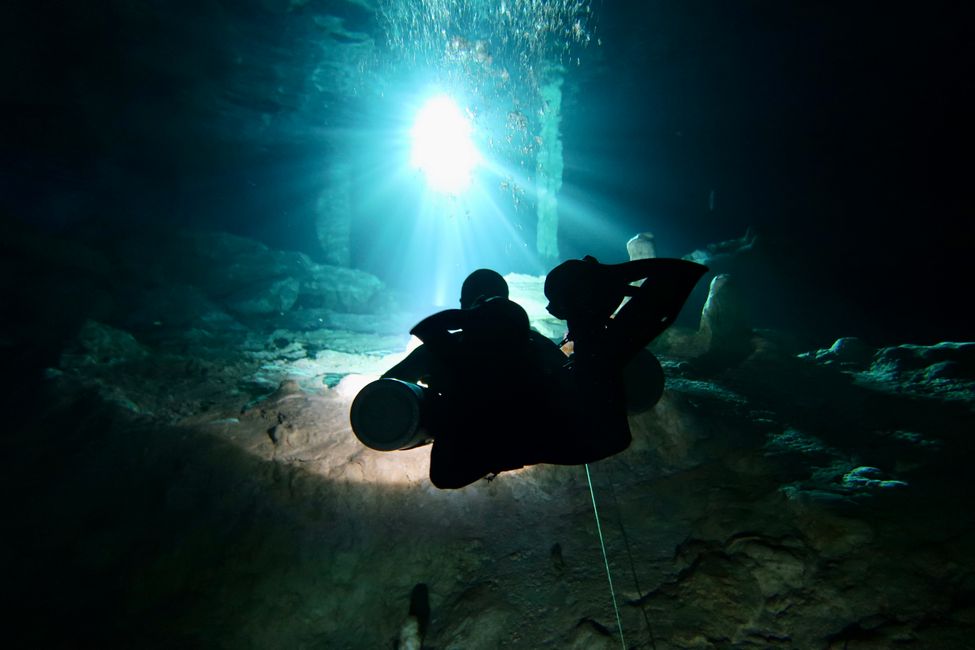
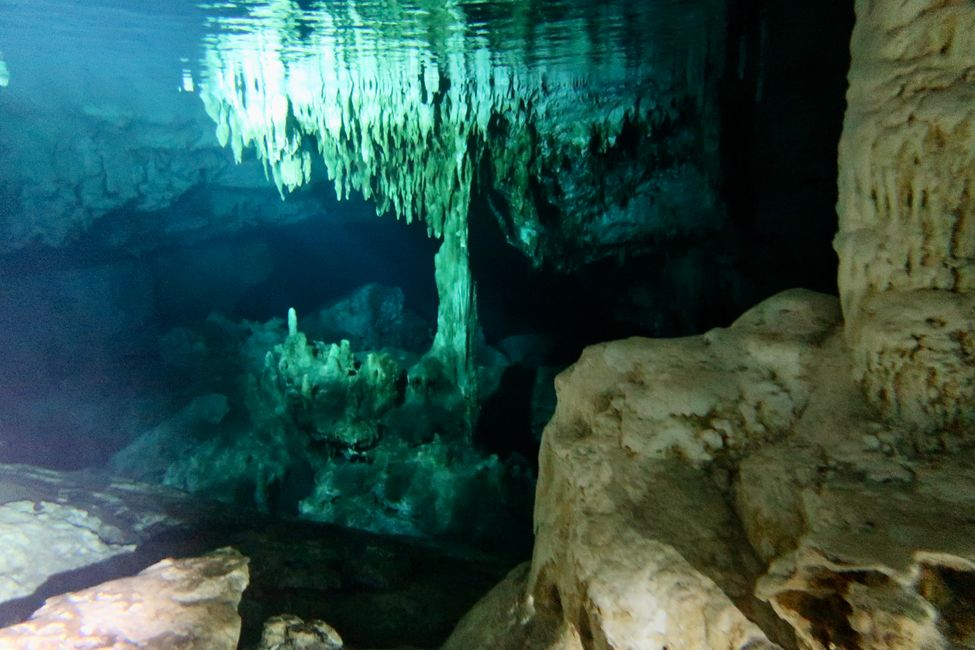
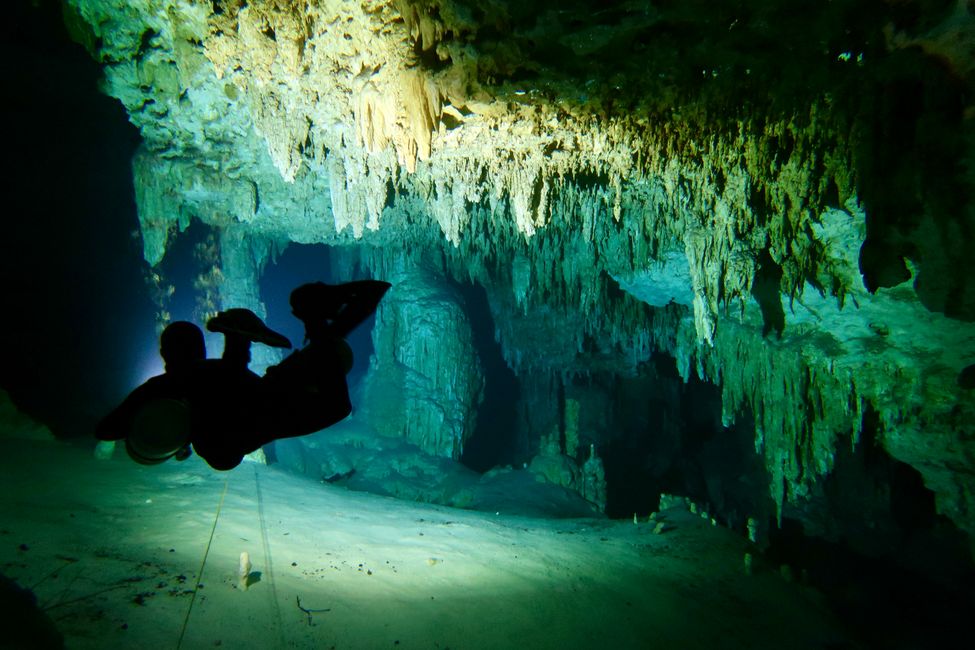
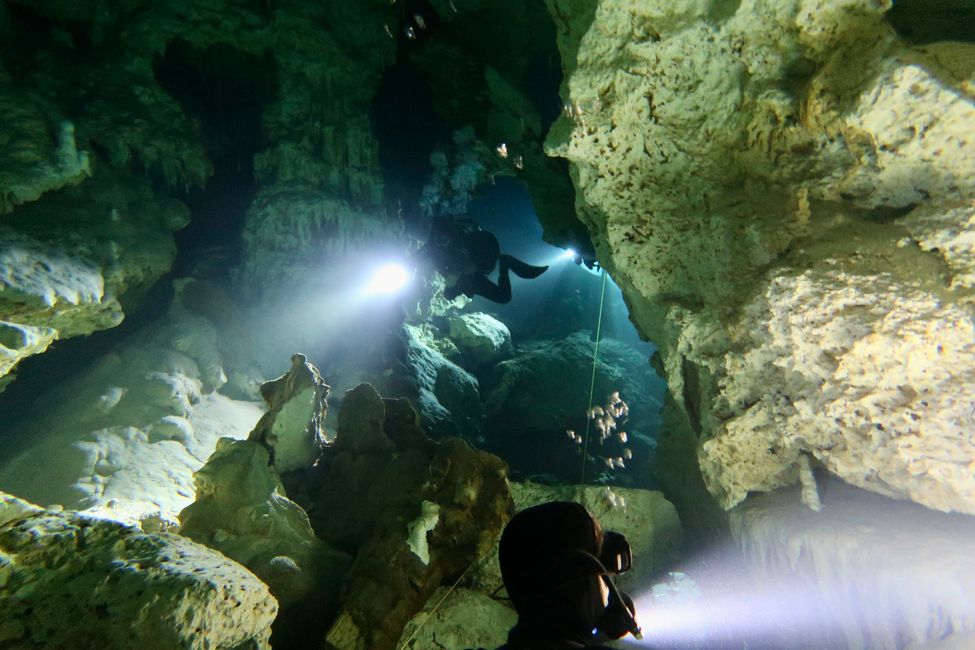
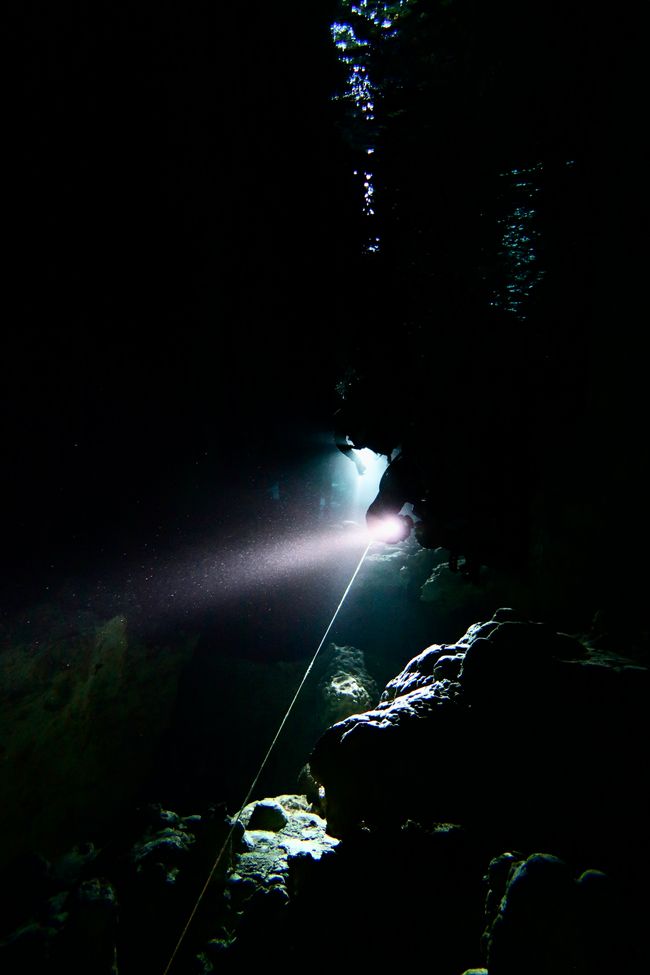
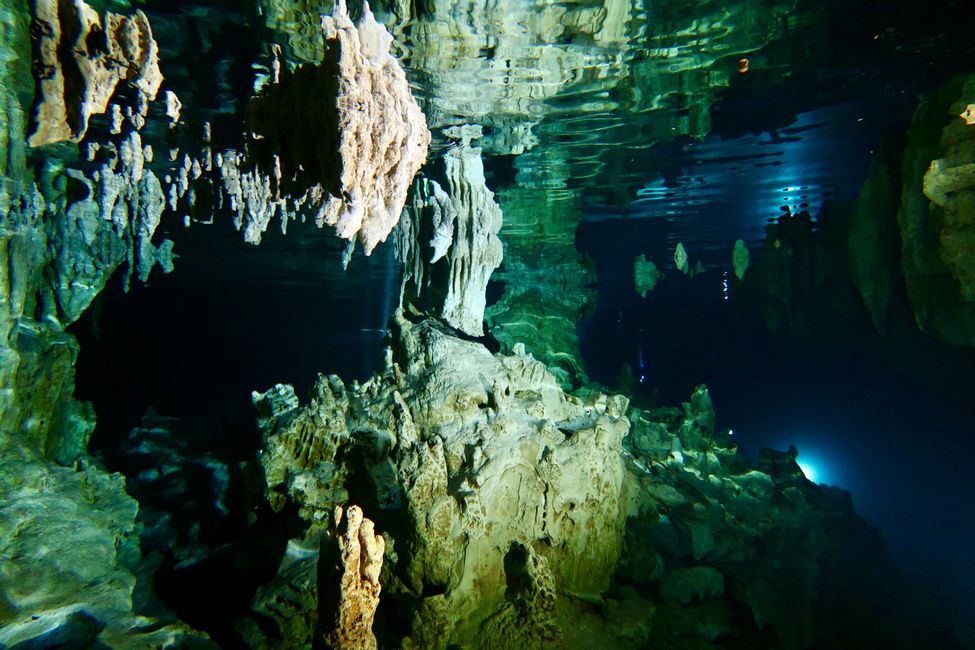
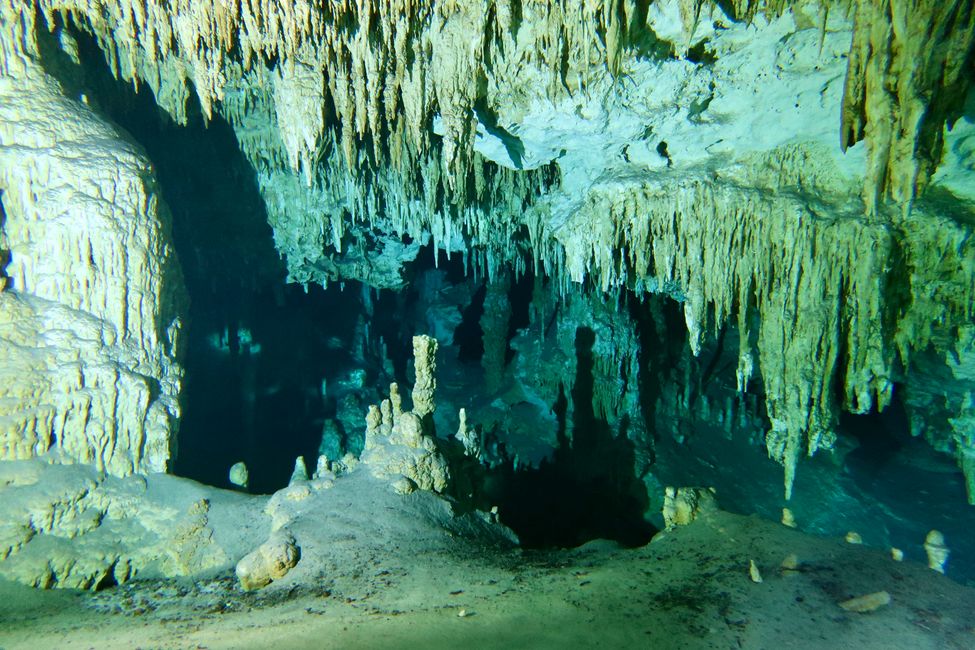
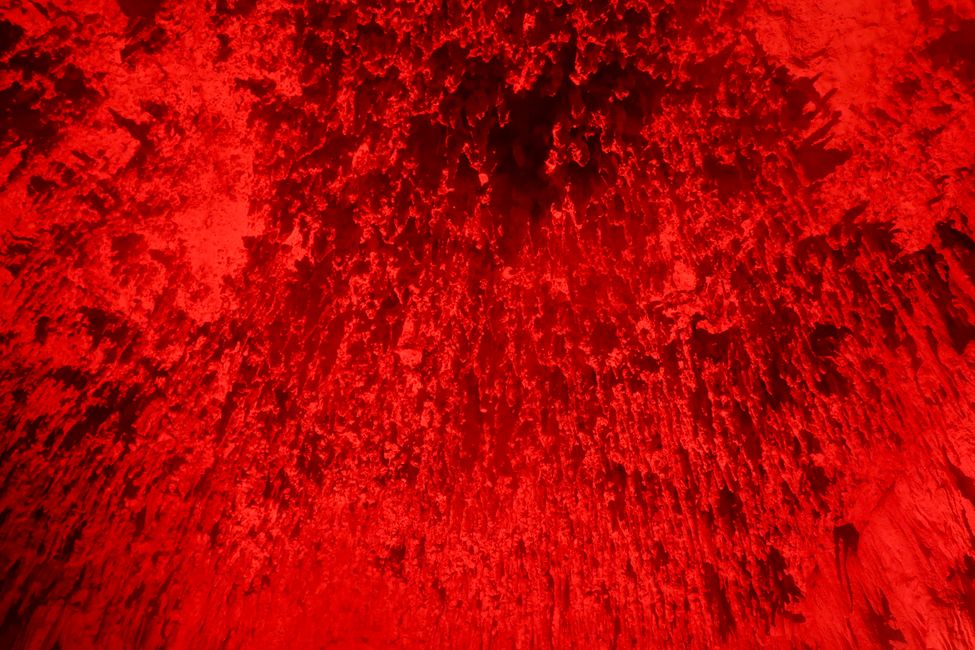
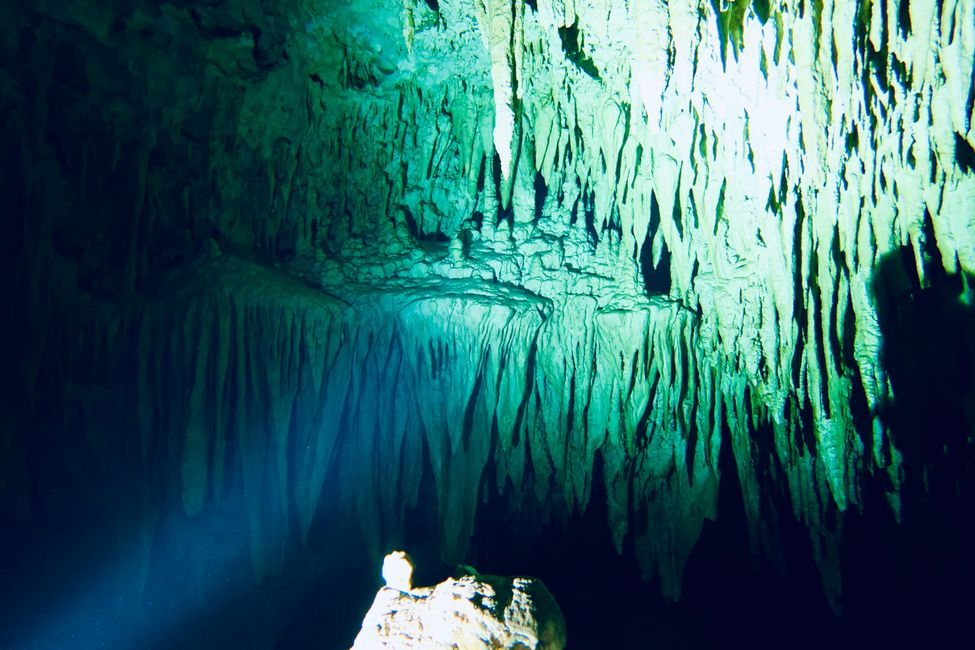
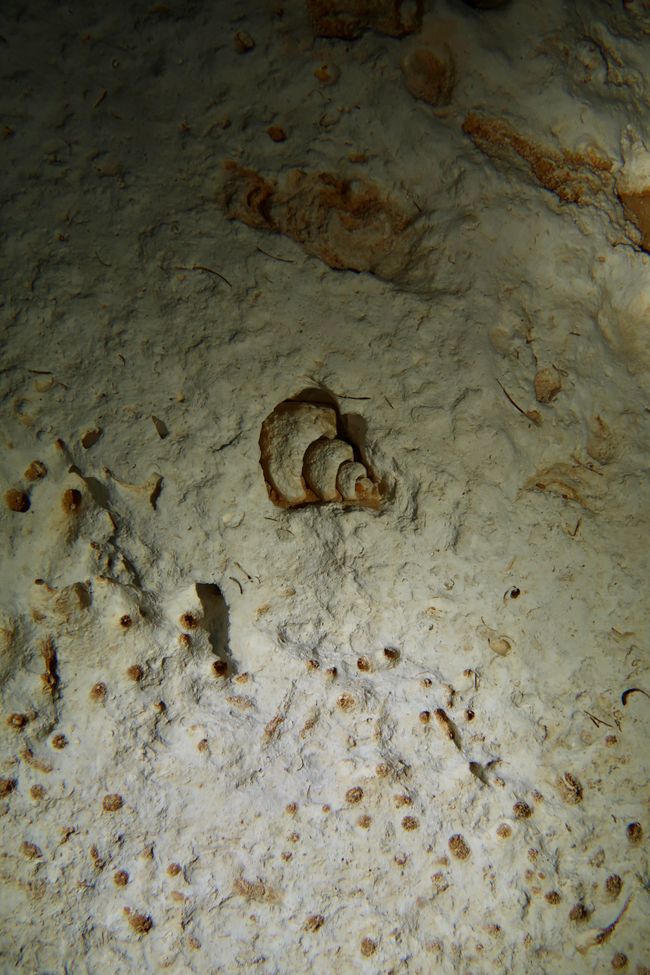
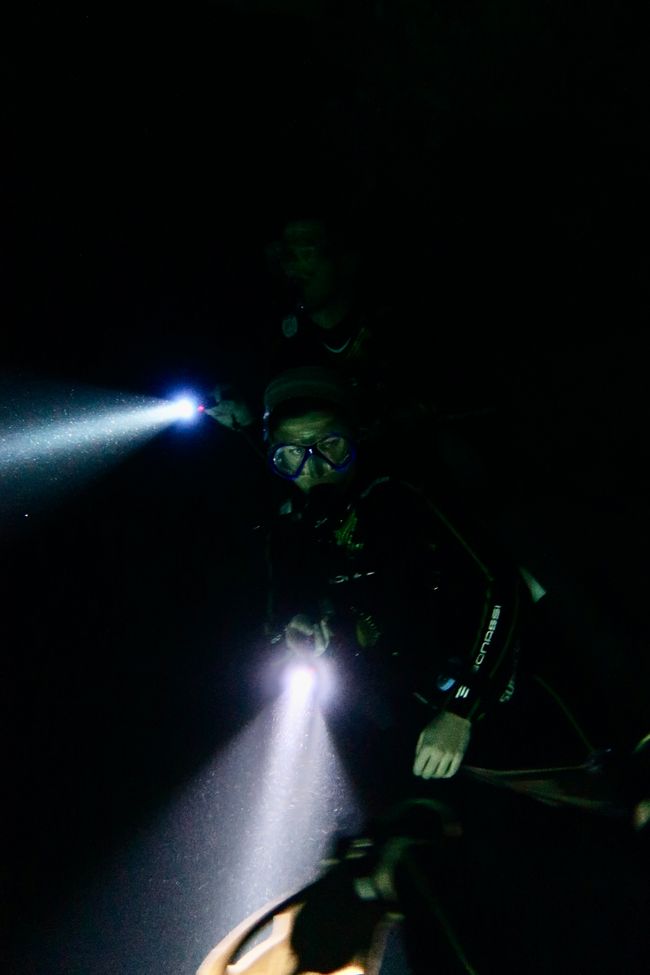
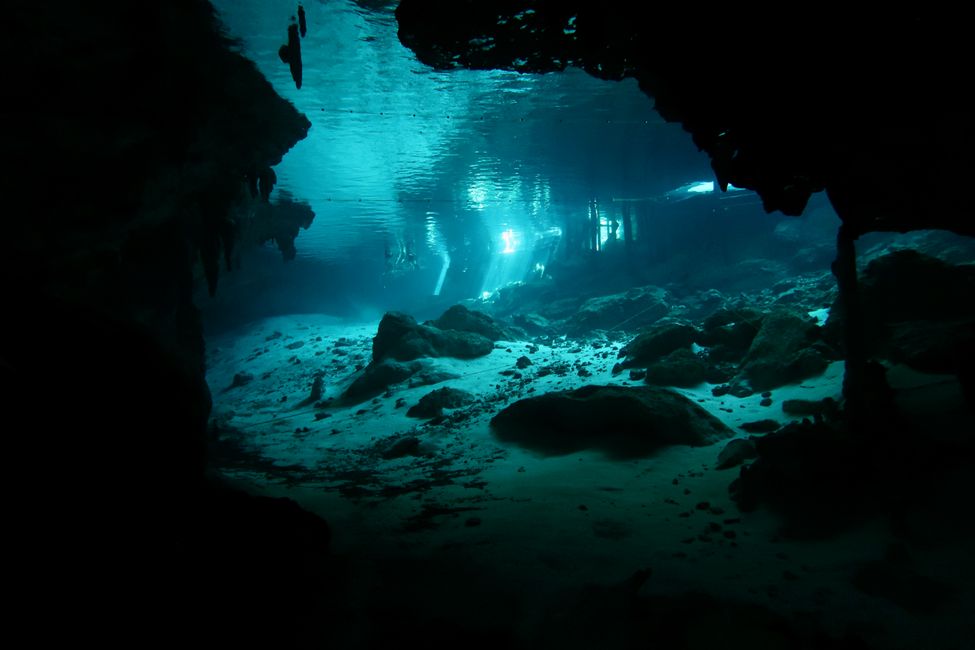
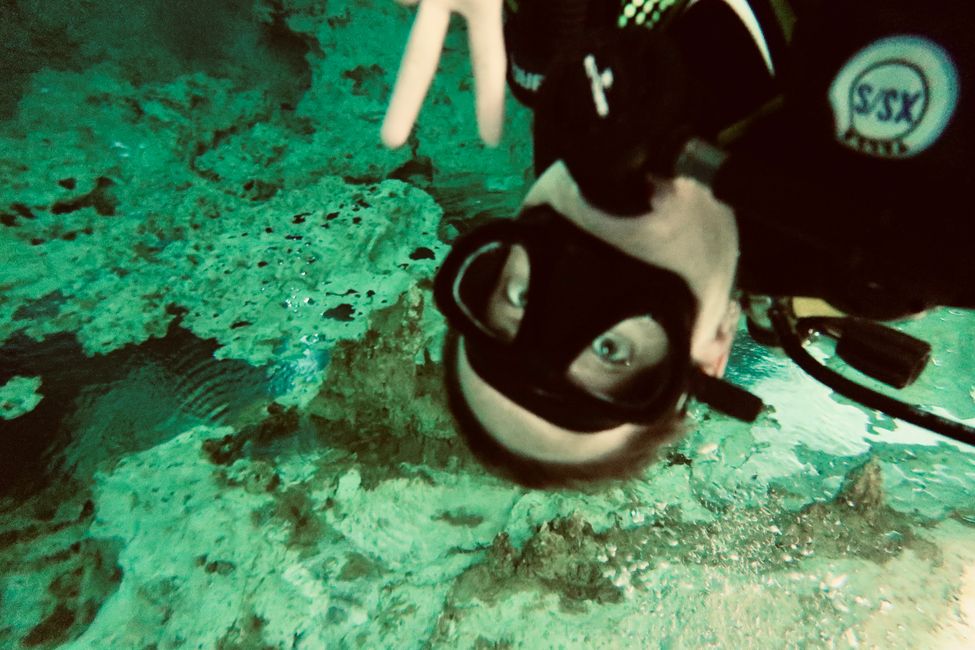
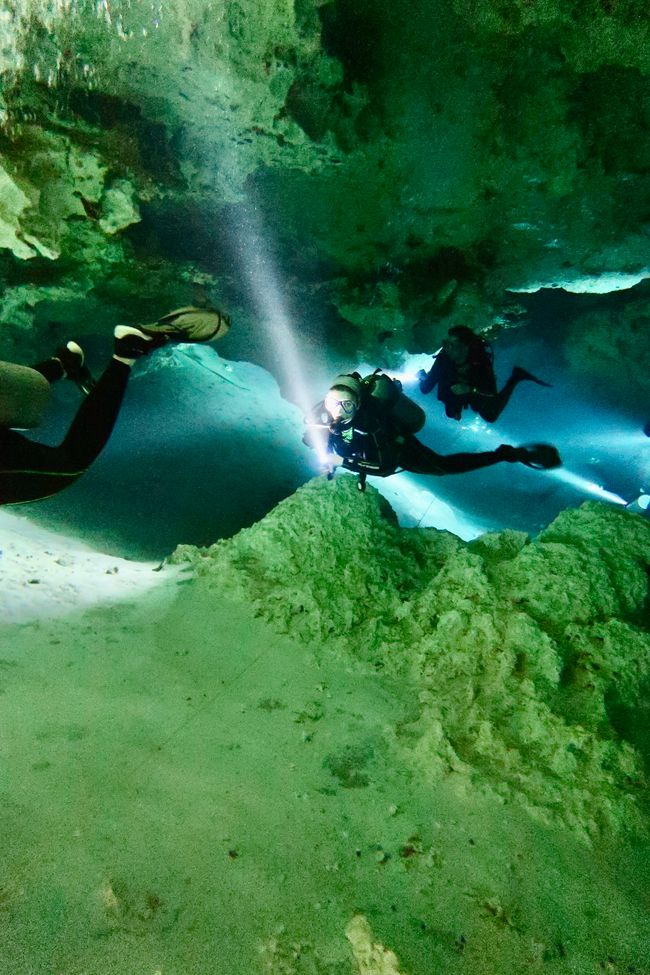
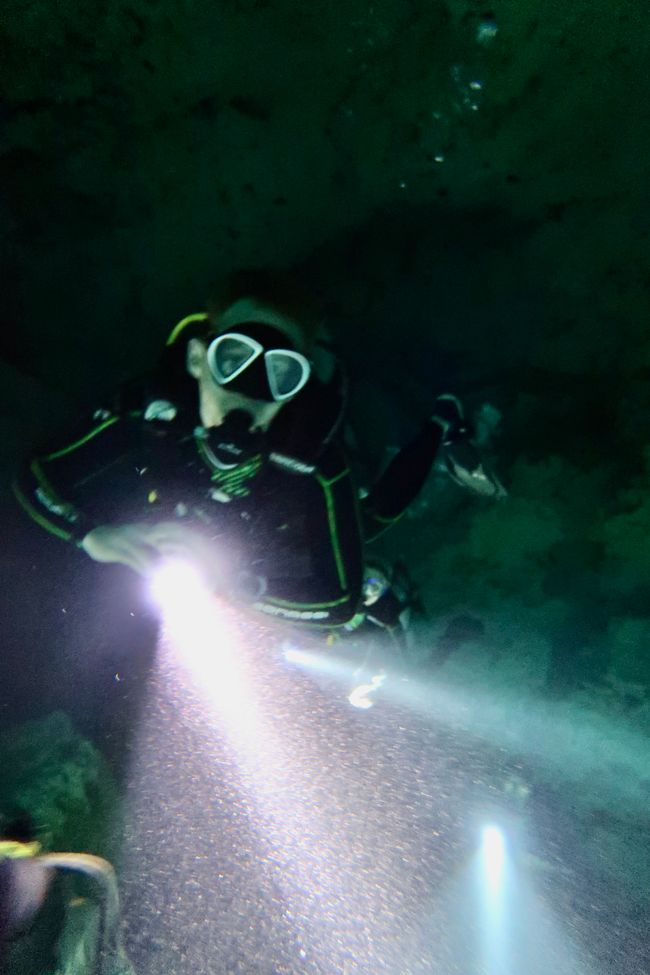
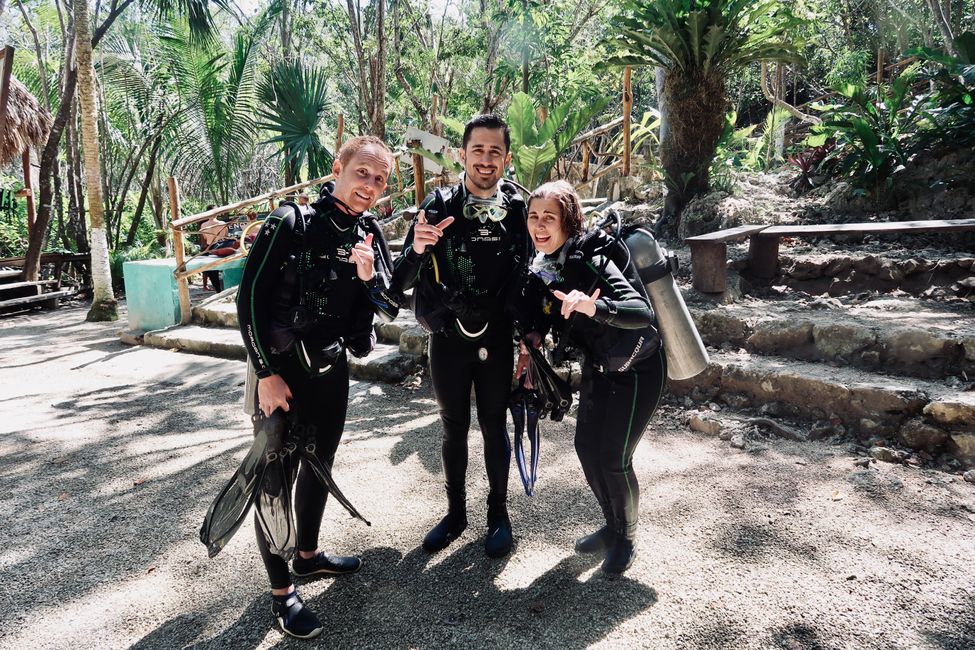
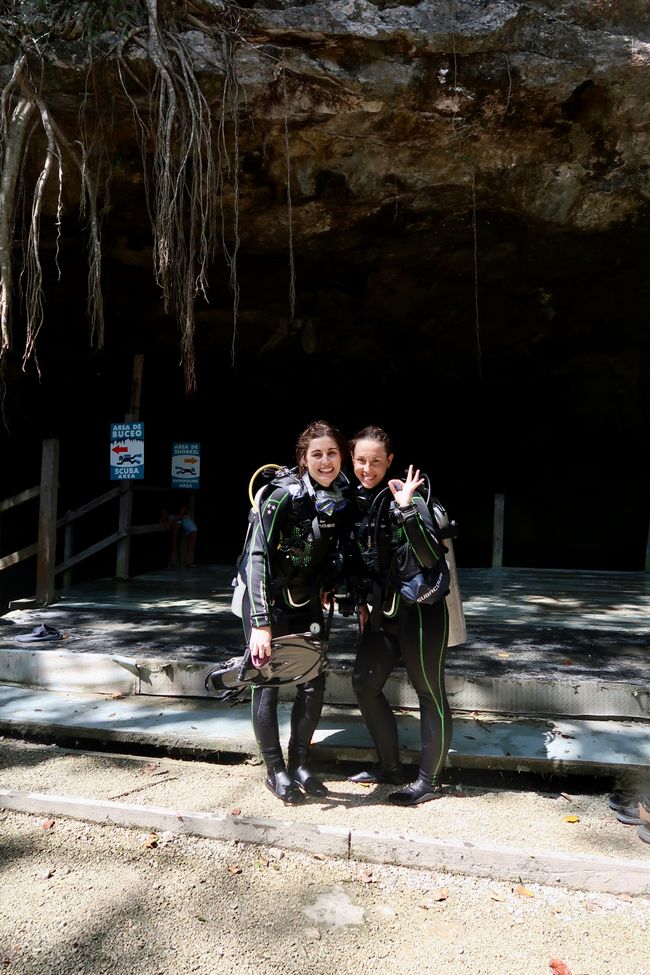
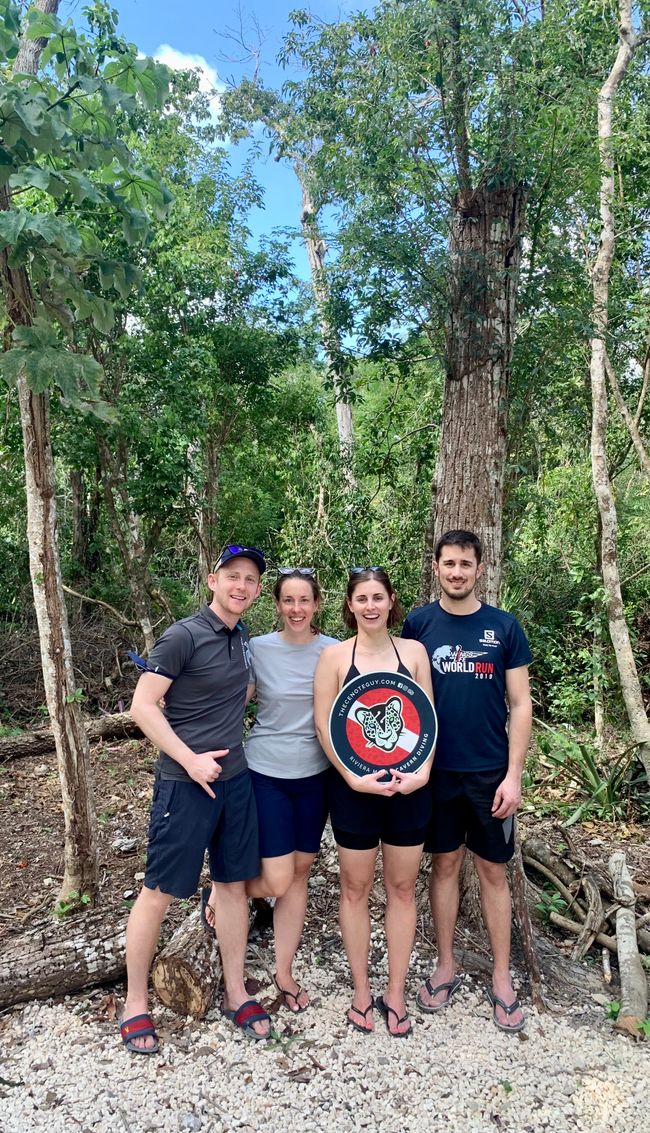
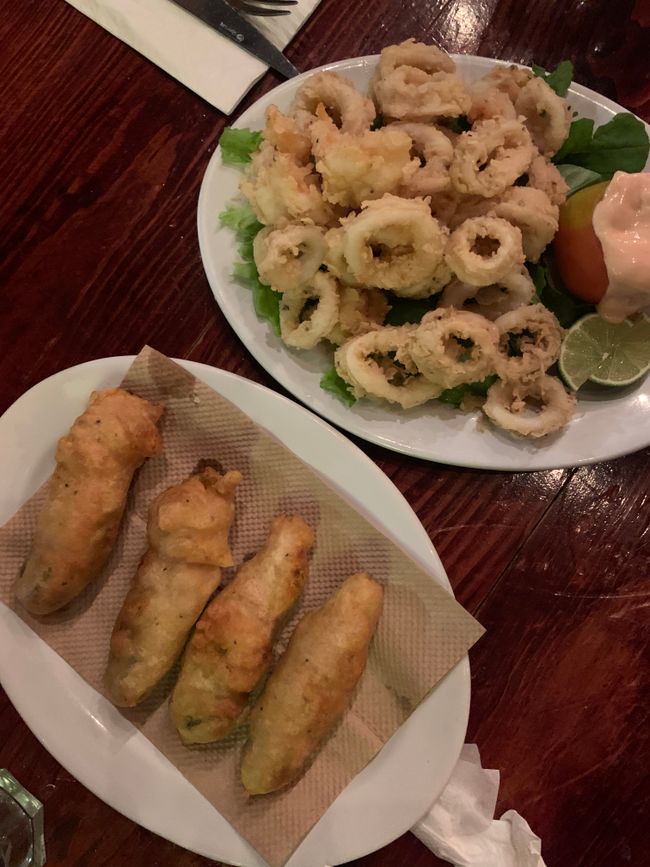
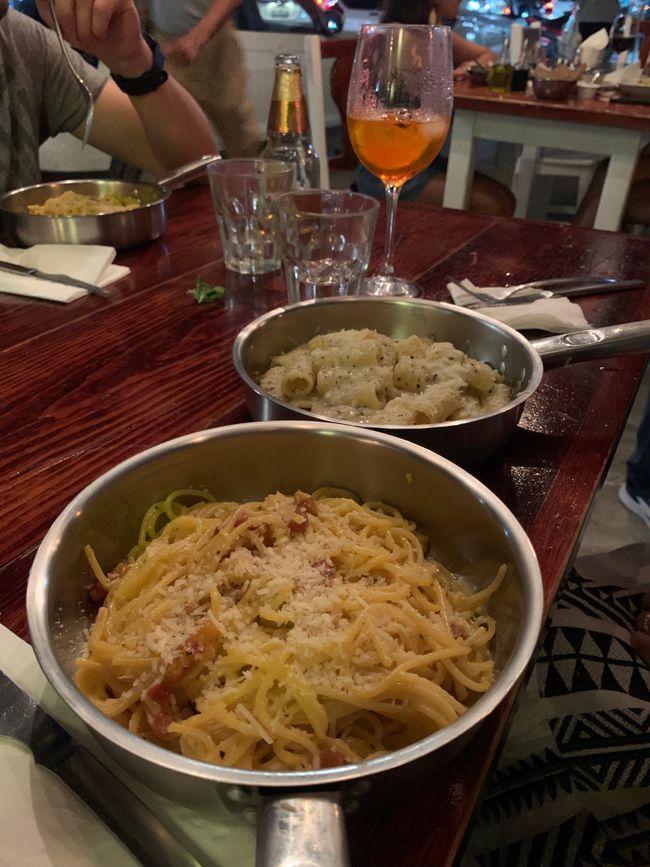
ਨਿਊਜ਼ਲੈਟਰ ਦੀ ਗਾਹਕੀ ਲਓ
After the margaritas remained in manageable quantities yesterday, today one of the highlights of the Mexico trip was on the program, diving in cenotes for the first time. Kathi R. organized an established diving school (https://thecenoteguy.com/) so that we can be best prepared for this new experience. After searching for ATMs for cash and strengthened by freshly pressed smoothies for breakfast (we'll ignore the espresso for now, unfortunately..), Mel, our guide, was waiting for us to visit the cenotes Dos Ojos (which means "two eyes" in German), which were about 20 minutes away.
Mel is an interesting figure, tattoos all over her body, two black braids over her shoulders, and lots of facial and ear jewelry. As a "refugee" from France, she has been living in Mexico for 11 years and you can already tell during the drive that she is passionate about diving in cenotes. We have all the equipment with us in the pickup truck, so we don't need to visit a diving station in advance. Admission per person for scuba divers is 300 pesos (approximately 14 €), but you get good infrastructure in return. Of course, we are not the only ones there and the area slowly fills up with pickups (divers) and minibusses (snorkelers). Mel, who already briefed us extensively about the geological and historical background (Mayan history) in the car, dives in various cenote locations on the peninsula almost daily with groups of up to 4 people. With her guidance and leadership, you feel well prepared and equipped.
We walk about 200m down to the "entrance" to the cenote, the relatively large natural pool is already well filled with snorkelers who can also move around here. Final check regarding water balance (do weights fit or need adjustment) and then we go down and start in single file. Dive number one follows the route "Barbie Line" and is beginner-friendly. Water temperature about 25 degrees and lighting conditions are OK. Mel says it will feel like flying due to the clear water and visibility, and yes, it does. In the end, we are underwater for over 50 minutes (almost) without incidents, except for a briefly loose tank bottle with Johannes.
A very cool start, and for session #2, Kathi decides to bring the camera, for which unfortunately an additional fee had to be paid (for photographing with our own camera... well). Route 2 was called Batcave, a more challenging route that eventually also gave us a short stop at the surface in an air dome with a light shaft, where numerous bats were frolicking. Here too, we are underwater for a total of almost 50 minutes and collect numerous great impressions that Kathi was able to capture partially in pictures.
At the end of the dives, Mel provided lunch with tacos for us to assemble ourselves. On the way back to Tulum, we have time to let everything sink in and discuss the plans for tomorrow. To our delight, Mel will be our guide again tomorrow, and due to the fact that we did well, we can also do a more challenging tour, but more about that tomorrow. As always with dives, but especially today due to the long underwater times, fatigue sets in after eating. When we arrive at the hotel, it's time to rest, read, and soak up the sun on the terrace.
The evening is very cozy, the girls discover a great Italian restaurant called "Acqua&Farina". A restaurateur from Rome runs this small (maximum of 10 tables) but very authentic restaurant, and even one of the waiters is Italian (from Genoa). No pizza, but antipasti dishes and great pasta variations are on the menu. We feast on calamari fritti and great pasta ranging from carbonara to frutti di mare, and as the crowning finale, homemade tiramisu. Kathi R. and I also enjoy a real espresso again, yes, it's also good here (finalmente...). A piece of Italy in the bustling life of Tulum. We end the culinary trip with a limoncello and somewhat tiredly stumble home to get to bed in time for the next adventure tomorrow.
The Daily Duo:
Insight:
Diving in cenotes is different in detail from classic diving in the sea. This starts with the equipment (flashlight!) and goes on to the communication signals (here, too, the flashlight comes into play, but this time it's about how to handle it and how the signals work). Of course, you often move in tight spaces or have less space and therefore have to move in a strict single file or change leg movements differently (= frog movement). Well, and you shouldn't bring claustrophobia or fear of dark waters, that can be revealed...
Moment of Bliss:
Lying on the couch in the hotel, looking at the photos of today's dive and reliving the spectacular images. Cenotes are not experienced every day, and sometimes they look even more unreal on the photos than they do in reality.
ਨਿਊਜ਼ਲੈਟਰ ਦੀ ਗਾਹਕੀ ਲਓ
ਜਵਾਬ (6)
Julia
Unterwasserwelt mal anders - wahnsinn😄👍🏻 Wünsch euch 4 schöne gemeinsame Tage in Mexico🇲🇽☀️Klementine
Wunderschön. Genießt die bunte Vielfalt! Ursula
Ganz toll, alles Gute für heute 🐟Claudia
Wie cool, wir haben das vor vielen Jahren auch gemacht. :) Hängt das Schild nicht da, dass man keine Moskitos töten soll? Haha. Wünsche euch weiterhin viel Spaß!Claudia
*noch da natürlich :)Johannes
Haha Claudia nein das haben wir nicht gesehen. War sehr cooles Erlebnis, danke dir 😃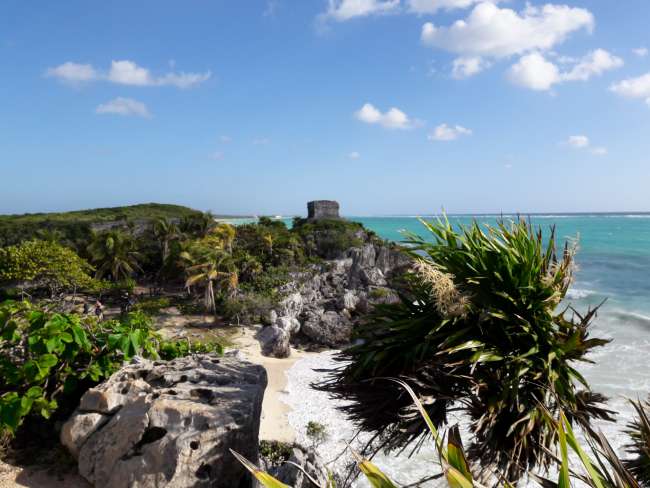
ਯਾਤਰਾ ਰਿਪੋਰਟਾਂ ਮੈਕਸੀਕੋ
